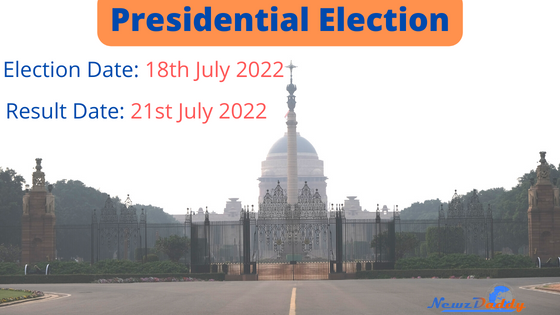Examine how India’s President is Elected
India’s presidential election will take place on July 18, 2022, with the results being announced on July 21, 2022. In the presidential elections of 2022, a total of 4,809 electors will vote.
According to the Election Commission, no political party can give a whip to its members.
On July 24, 2022, President Ram Nath Kovind’s term would come to an end. The Presidential and Vice-Presidential Elections Act of 1952 requires the Election Commission to make a notification calling the elections 60 days before the current President’s term expires.
How does India’s President get elected?
The President of India is chosen in a more sophisticated manner than members of the Lok Sabha or the Prime Minister of India.
The Indian President is chosen by members of an electoral college that includes elected members of the Lok Sabha and Rajya Sabha, as well as elected members of state legislatures, including the UTs of Delhi and Puducherry.
Members of either House of Parliament or the Legislative Assemblies who have been nominated are not entitled to vote in the electoral college.
An electoral college comprises 543 Lok Sabha members, 233 Rajya Sabha members, and a total of 4120 Legislative Assemblies members. This brings the total number of electors to 4896.
What is the Electoral Formula, and how does it work?
The Election Commission has announced this time that “An MP’s vote will be worth 700 points. Those under preventive detention can vote, whereas those in prison must seek release and, if granted, can vote.”
This year, voters will be required to mark their choices against the names of candidates using only a specific pen provided by the appointed official, as told by the Election Commission.
As a result, this year’s vote value for each MP is set at 700, but the value of MLAs in each state varies due to the strength of the Legislative Assemblies and the population of the individual states.
In the election process, there is also a formula that is employed to ensure uniformity in the scale of representation of different states.
The formula is as follows:
The state’s total population (as of the 1971 census) / the total number of elective seats in the Legislative Assembly x 1000= Value of members of the Electoral College’s votes (MLAs)
How Do Indians Vote in Presidential Elections?
The voting pattern for the presidential election is based on a proportional representation system using a single transferable vote. On the ballot paper, there is no election symbol. Instead, two columns have been added. The names of the candidates appear in the first column, followed by the order of choice in the second.
The votes are then counted after each member of the electoral college has marked his choice against each candidate. They do not abstain from voting, and there is no ballot paper that can be thrown out due to a lack of valid preference markings.
Based on this mechanism and electoral procedure, India has elected 14 presidents. We are currently waiting for India’s 15th President to take the oath of office. The final findings will be available in July. Meanwhile, have a look at the table below, which lists all of India’s presidents and their terms in office.

